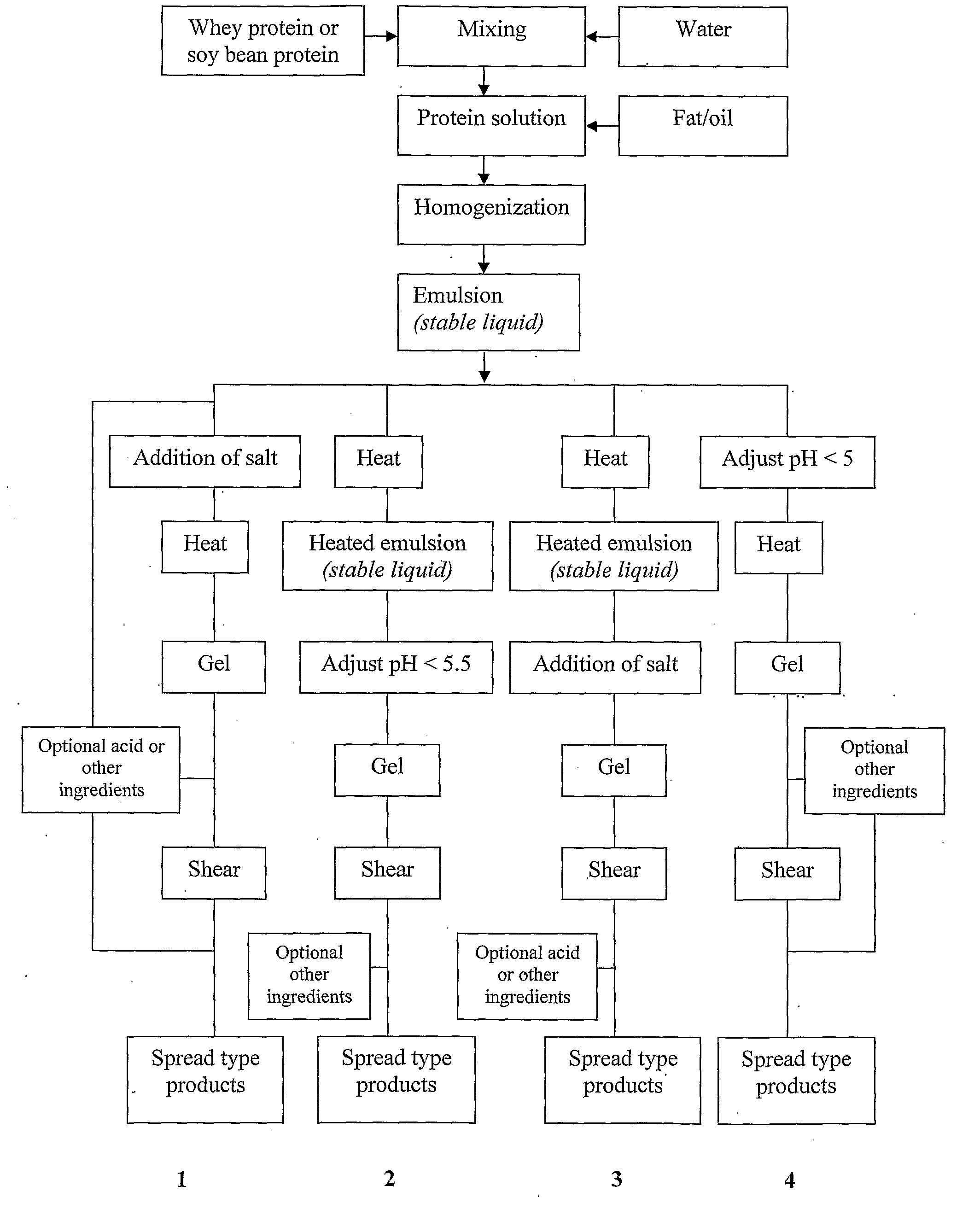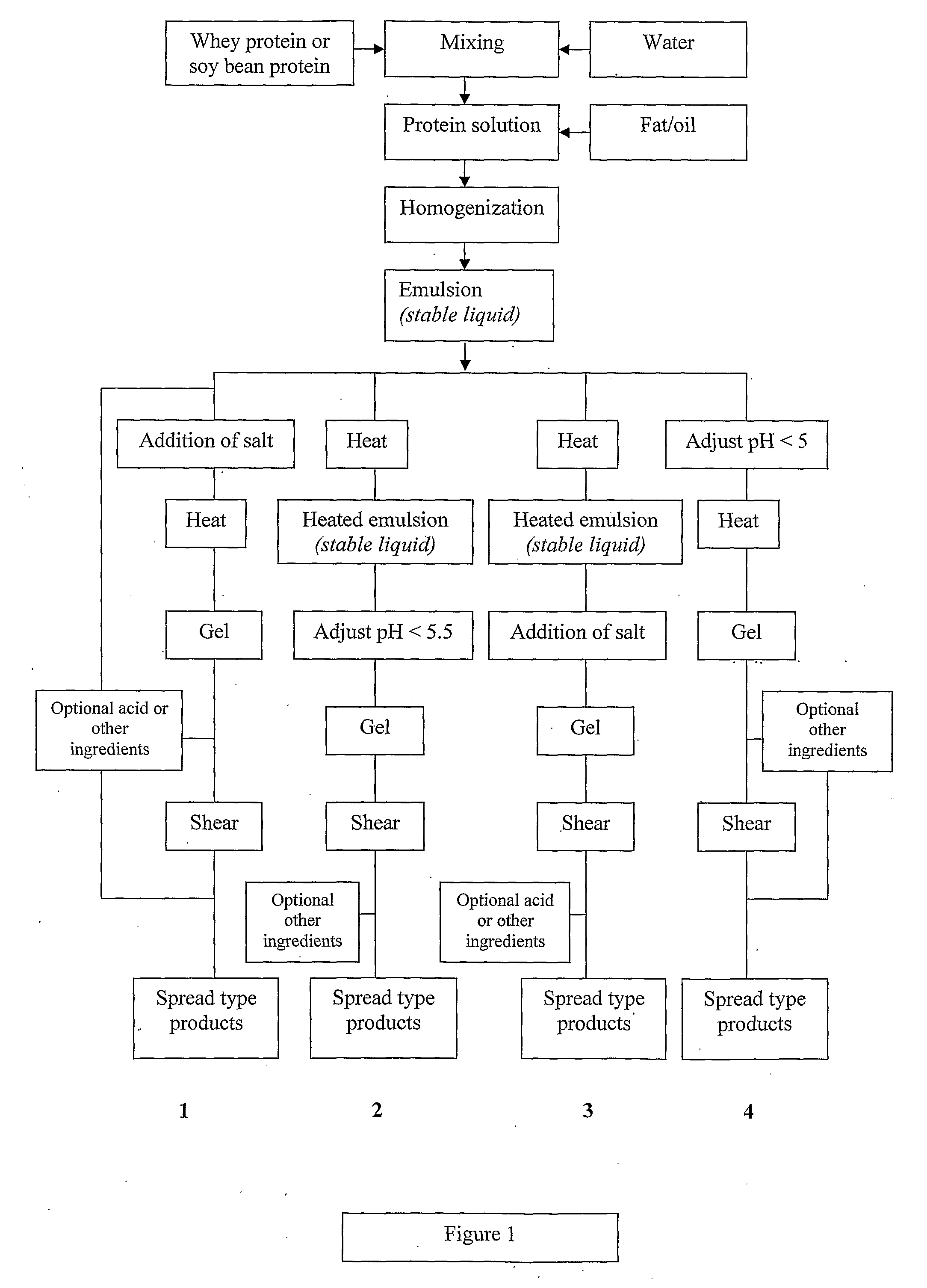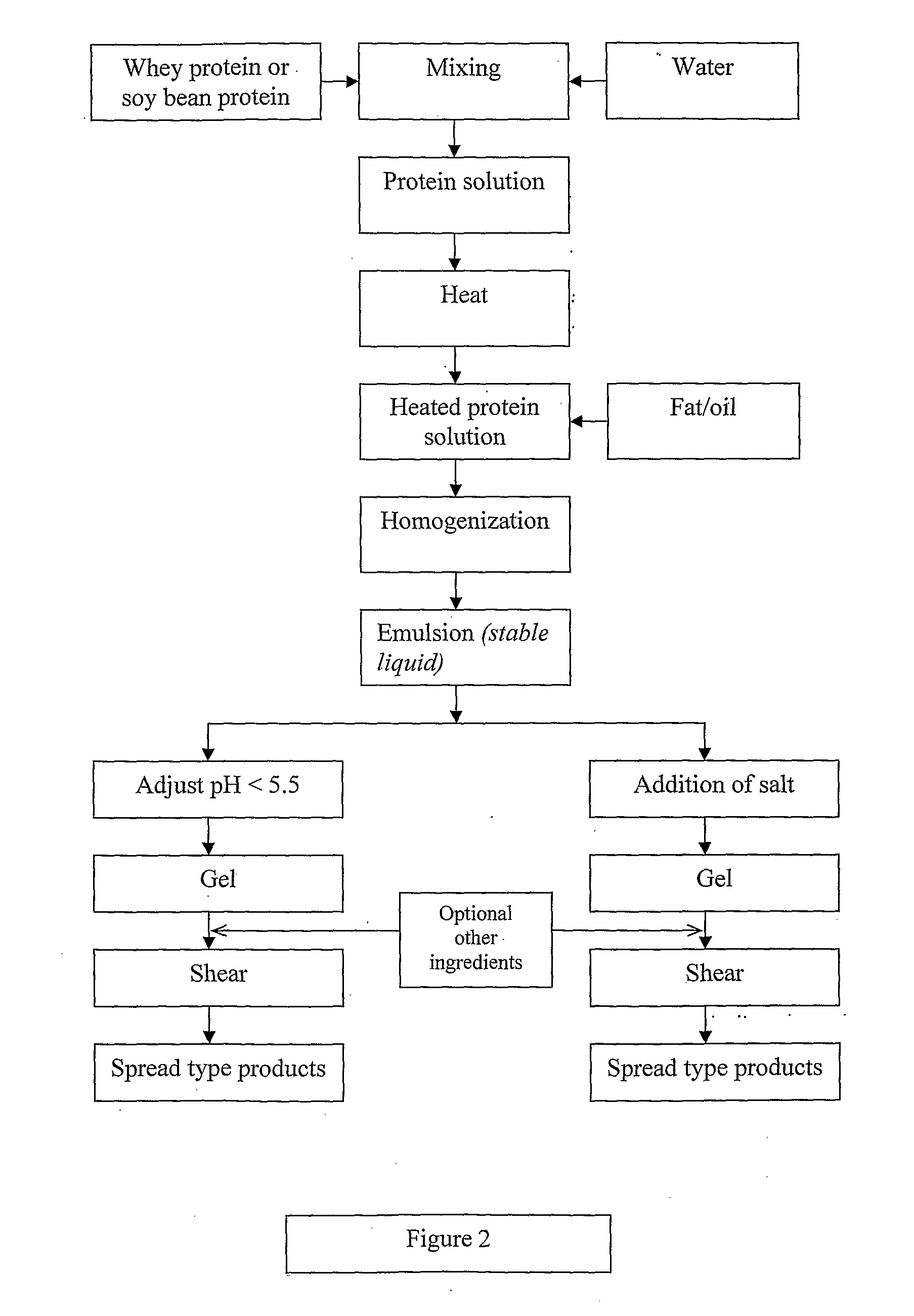Dairy product and process
a technology of emulsion composition and dairy products, applied in the direction of vegetable protein working up, food ingredient as emulsifier, food ingredient as gelling agent, etc., can solve the problems of high price of eggs and require careful handling, and achieve the effect of reducing the ph
- Summary
- Abstract
- Description
- Claims
- Application Information
AI Technical Summary
Benefits of technology
Problems solved by technology
Method used
Image
Examples
example 1
Preparation of Sheared Spread-Like Emulsion Gels
[0057]Emulsion was prepared using 2.4% protein (WPC A392) and 10 w / w % milk fat or sunflower oil. After the homogenising the mixture, 150 mM (0.88%) NaCl was added to emulsion. Emulsion in the presence of NaCl was then filled into metal cans and retorted at 121° C. for 16 min. The emulsions were then cooled down to room temperature in a water bath. The emulsion gel was removed and then blended or stirred in a high speed blender. A cream-like or paste-like gel was formed. This cream-like gel was described to be stable with no syneresis over along period of time (more than two weeks).
[0058]The rheological properties of the cream-like sheared emulsion gels were determined using the methods described above. FIGS. 3 and 4 demonstrate that the cream-like sheared emulsion gels formed using milk fat and sunflower oil behaved similarly, i.e. the texture in both cream-like sheared emulsion gels was stable over wide ranges of frequencies (0 to 10...
example 2
Preparation of Shear Spread Like Gel from Emulsions Made with Different Protein Sources
[0061]Emulsions consisting of 3% protein using WPC (A392), WPC (A342), WPI (A895), or SPI and 10% milk fat and 150 mM NaCl were prepared using the same conditions as in Example 1. The firmness (G′) and viscosity, measured described in the Materials and Methods section above, of spread-like sheared gels at 20° C. is shown in the Table 1. The results show that the shear spread-like sheared gel made with WPCs (A392 and A342) had similar gel firmness and viscosity. The sheared gel made with WPI had much higher firmness, and product made with UF whey retentate had higher firmness than that of gel made with WPCs, but SPI sheared gel had a much lower firmness and viscosity.
[0062]This example demonstrates that various levels of product firmness and viscosity can be achieved from choosing different protein source.
TABLE 1Firmness (G′) and viscosity of shear spread-like sheared gel madewith emulsions formed ...
example 3
Preparation of Spread-Like Sheared Gel from Emulsions Made with Different Lipid Sources
[0063]The sheared gels made from emulsions containing 3% protein (A392) and 10 w / w % soy bean oil, milk fat (AMF) or fresh cream were prepared using the same conditions described at example 1. The firmness (G′) and viscosity, measured described in the Materials and Methods section above, of spread-like gels sheared at 20° C. is shown in the Table 2.
[0064]This example demonstrates that sheared spread like gels can be formed from different oil / fat source. It can be used to achieve a desired formulation in a product by choosing different oil / at source.
TABLE 2Firmness (G′) and viscosity of sheared spread-like gel made withemulsions formed with different lipid sources under heat treatment.Protein sourceFirmness G′ (Pa)Viscosity (Pa s)Soy bean oil2421070Milk fat (AMF)3021120Fresh cream2861135
PUM
 Login to View More
Login to View More Abstract
Description
Claims
Application Information
 Login to View More
Login to View More - R&D
- Intellectual Property
- Life Sciences
- Materials
- Tech Scout
- Unparalleled Data Quality
- Higher Quality Content
- 60% Fewer Hallucinations
Browse by: Latest US Patents, China's latest patents, Technical Efficacy Thesaurus, Application Domain, Technology Topic, Popular Technical Reports.
© 2025 PatSnap. All rights reserved.Legal|Privacy policy|Modern Slavery Act Transparency Statement|Sitemap|About US| Contact US: help@patsnap.com



